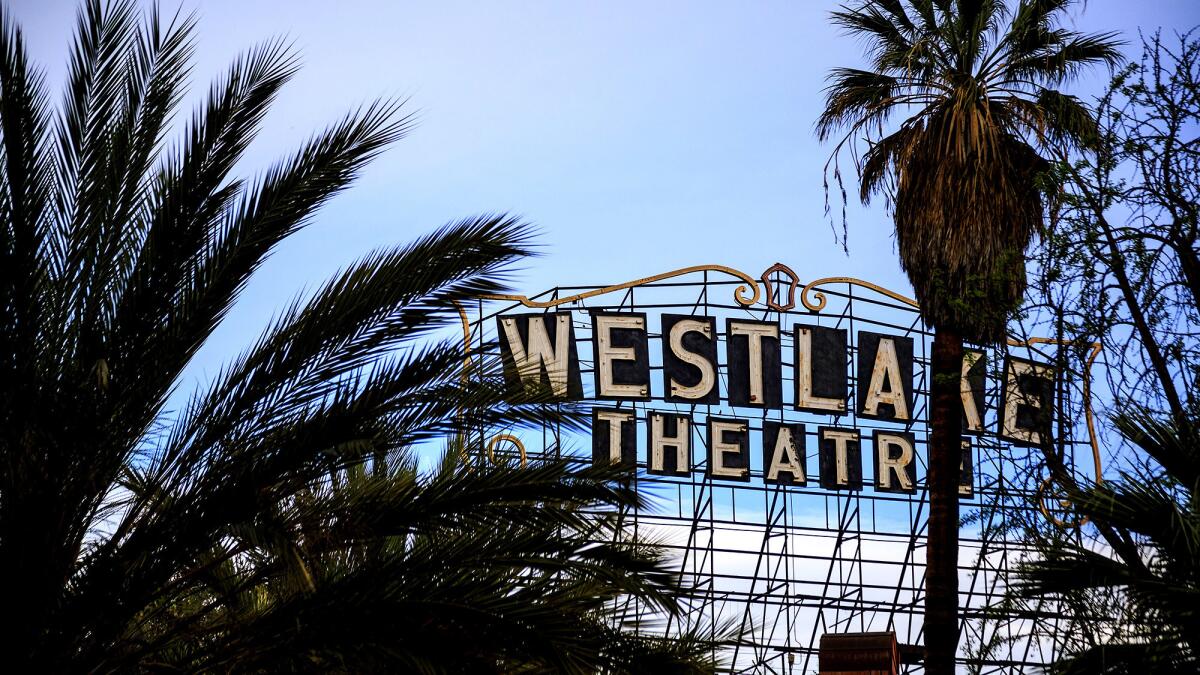Neighborhood Spotlight: Westlake a former glamour spot that’s attractive to bargain hunters

- Share via
Decades before Westside enclaves like Santa Monica and Brentwood were a thing, there was another L.A. neighborhood where movie stars, oil magnates and media barons lived cheek by perfumed jowl in grand homes and bohemian bungalows, just a stone’s throw from downtown.
It was a neighborhood whose roots stretch back to the 1850s, and which took its name from the artificial lake built on the site of an alkaline swamp on the western edge of the city: Westlake.
Before it was Westlake, it was a neighborhood of fine Victorian homes populated by well-heeled Midwestern transplants who had packed their best silver and finest furs into steamer trunks and fled the snowy winters and crowded cities in favor of the endless summers and plentiful real estate of California. On Crown Hill and along Orange Street (now Wilshire Boulevard), subdivisions multiplied as demand for homes, fueled by new streetcar lines, boomed.

By the time the city fathers cut the ribbon on Westlake Park and its namesake lake in 1890, the neighborhood was already home to such leading lights as Harrison Gray Otis, who owned The Times, and many other moneyed Angelenos. The beautifully landscaped park and its lake solidified the neighborhood’s status as a destination for the affluent, as well as for workaday citizens who came via trolley to stroll the grounds or rent a rowboat.
When oil was struck in the north end of the neighborhood in 1892, wooden derricks sprang up overnight as speculators (and homeowners drilling for petroleum on their own land) looked to cash in on the black-gold rush. Alarmed at the onslaught of unsightly wells, homeowners south of 3rd Street successfully lobbied to ban drilling in their corner of Westlake, preserving its glamorous allure.
As the movie industry grew in importance in L.A., Westlake became popular among the silent-movie set. To meet housing demand during the boom that followed in the 1920s, developers began to build grand apartment houses and bungalow courts alike, squeezing more people into the area.
After World War II, the park’s name was changed to honor Gen. Douglas MacArthur, and freeway access to points west accelerated the exodus of the well-to-do from Westlake.
The decimation of the affordable housing stock on Bunker Hill during the 1960s led many working class Angelenos to move to the plentiful, relatively cheap apartment buildings of Westlake. During the 1980s, it became an important gateway neighborhood to those fleeing civil war in Central America, and it remains a place whose bustling energy stems from its large immigrant population.
Neighborhood highlights
An entryway to America: From Langer’s Deli — founded by the sons of Russian immigrants in the 1940s — to the numerous shops that cater to newer arrivals, the immigrant experience is key to Westlake.
World’s shortest commute: The proximity to downtown is still a draw, and Koreatown is walking distance from much of the neighborhood.

Neighborhood challenges
Supply and demand: As Westlake continues to redevelop, the challenge will be to provide housing for new residents while ensuring established residents are not dislocated.
A rough reputation: Though Westlake has seen continuing improvement in its overall crime rate, it still ranks high in the incidence of violent crimes compared with other L.A. neighborhoods.
Expert insight
Carol Li of Fidelity Realtors has two listings in Westlake, a neighborhood that she said has become more coveted in recent years, especially for budget-conscious first-time home buyers priced out of downtown and other areas.
“They see the potential,” Li said of Westlake. “I have seen many properties move fast, because, location-wise, it’s very convenient. And this area is still reasonable for people to afford.”
That being said, many homes will need some TLC.
“There are some beautiful properties there, but some have a lack of maintenance,” she said. “Sometimes with a little bit of paint and a little bit of remodeling, it really brings out the character.”
Market snapshot
Portions of the 90017, 90026 and 90057 ZIP Codes make up the Westlake area. In October, the median sale price for the 90026 ZIP was $883,000 based on 19 sales. There were no single-family homes sold in 90017 and 90057 ZIP that month, according to CoreLogic.
Report card
There are more than two dozen public, private and charter schools within the boundary of Westlake. Among them is Hoover Street Elementary, which scored 812 out of 1,000 in the 2013 Academic Performance Index.
Charles White Elementary scored 770 and Rosemont Avenue Elementary had a score of 743. Sal Castro Middle had a score of 692, Los Angeles School of Global Studies scored 649 and New Village Charter High scored 551.
MORE FROM HOT PROPERTY
Emilio Estevez gets $6.35 million for home and vineyard in Malibu
TV producer Norman Lear looks to get in tune with a buyer in Brentwood
Filmmaker Akiva Goldsman buys Pacific Palisades home of former MPAA president
Dodgers’ Adrian Gonzalez makes a play for Bret Boone’s estate in Rancho Santa Fe
Sign up for Essential California
The most important California stories and recommendations in your inbox every morning.
You may occasionally receive promotional content from the Los Angeles Times.



